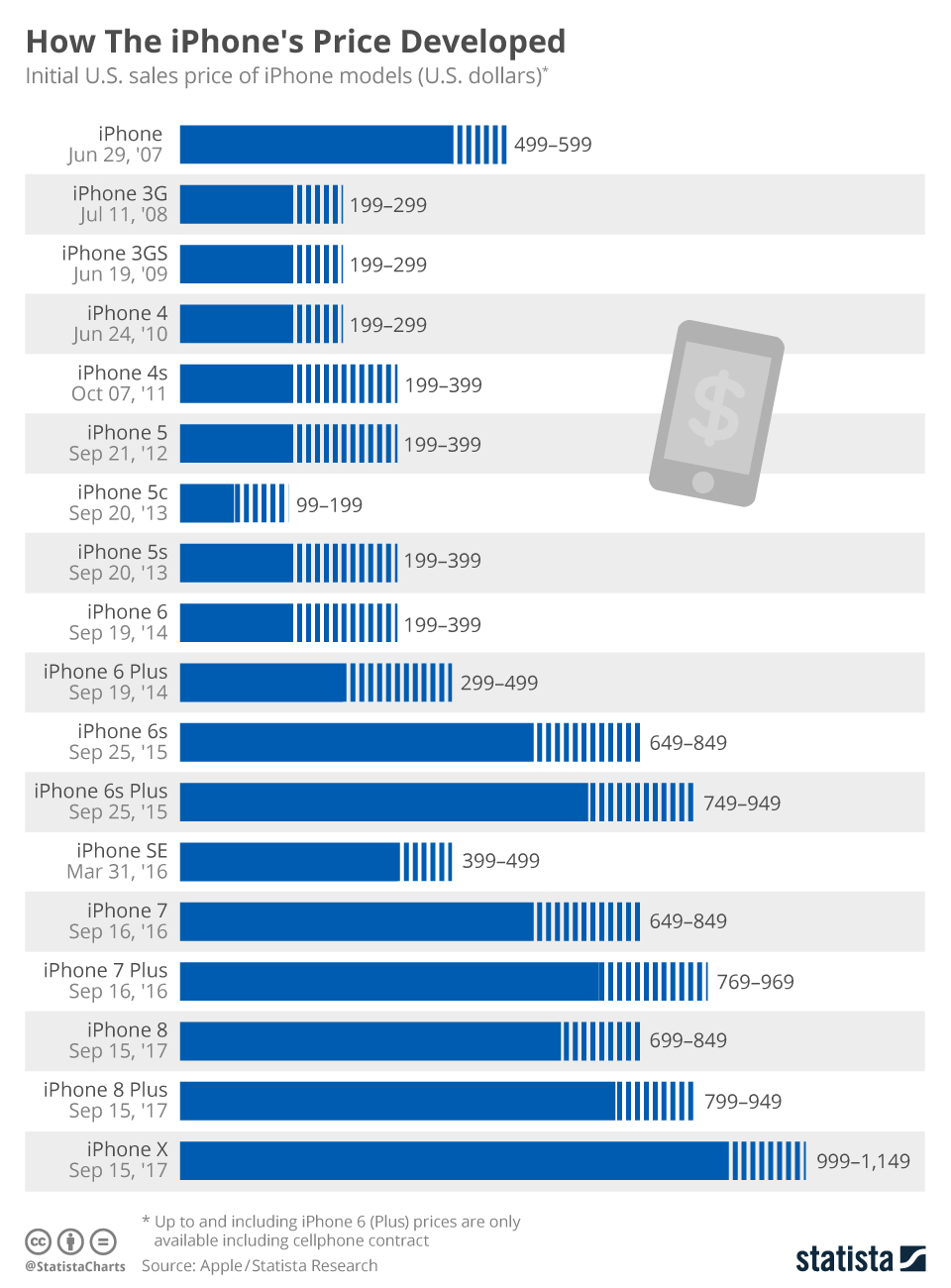According to preliminary estimates from IHS Markit, the new Apple iPhone 8 Plus has a bill of materials cost of $288.08, for the version that has 64 GBytes of NAND flash memory. When the basic manufacturing costs of $7.36 are added, the total cost of making an iPhone 8 Plus comes to $295.44, which is $17.78 higher than that of the iPhone 7 Plus. IHS Markit also estimates that the iPhone 8 bill of materials is $247.51, which is $9.57 higher than the iPhone 7 at the time of release. The unsubsidized price for the 64GByte iPhone 8 starts at $699, which is $50 more than the launch price for the iPhone 7. The iPhone 8 Plus starts at $799, which is $30 higher than the launch price of the iPhone 7 Plus.
IHS Markit is also performing an analysis of the iPhone 8, to explain how the price differential for the iPhone 7 and 7 Plus was $120 last year, while the iPhone 8 price differential is $100.
Andrew Rassweiler, senior director of cost benchmarking services for IHS Markit pointed out that, the higher cost of the iPhone 8 Plus is the result of slower annual component cost erosion tied in with additional features, with the biggest cost adders being the increased NAND flash memory content and new wireless charging components.
Like the iPhone 7 Plus, the iPhone 8 Plus features a 5.5” full HD display, an aluminium frame and hardened glass. Because the iPhone 8 Plus features wireless charging, the aluminium body design was abandoned for a more traditional glass back.
According to the IHS Markit, Smartphone Model Market Tracker for Q3 2017, the introduction of the iPhone 8 and 8 Plus comes when the major smartphone manufacturers are in a battle for market share. The top three smartphone makers are Samsung, with 23%, then Apple, with 12%, and Huawei with 11%.
Gerrit Schneemann, senior analyst for mobile handsets pointed out that the iPhone 8 and 8 Plus, and the iPhone X, are important devices for Apple as the company’s shipments for the last quarter were flat. Samsung’s Galaxy S8 devices, on the other hand, have been successful in the high-end pricing segment. Schneemann believes that the iPhone X, when it becomes available in November, stands to further confirm Apple’s grip on the premium pricing tier.
The iPhone 8 and 8 Plus includes a new proprietary six-core, 64-bit A11 Bionic chip, which is manufactured using a new 10 nm process. The new chip means the phone runs about 30% percent faster than last year’s A10 CPU, and runs more efficiently, using half the power with and the battery life being prolonged. The chip is powerful enough to support the phone’s AR features.
Apple is putting AI in the updated the iPhone Plus camera with a special neural engine in the A11 Bionic chip, which enables a host of computational photography capabilities in the portrait mode on the iPhone 8 Plus. For the first time, all six cores of the CPU cluster can be activated at once to crush through operations. The A11 Bionic also features an all-new Apple designed tri-core GPU that boasts 70% better graphical performance than its predecessor.
The iPhone 8 series will not feature an edge-to-edge OLED display as expected in the iPhone X. The new iPhones will carry the same LCD displays as in years past but with new support for HDR rendering giving video content higher dynamic range and visual quality. The iPhone 8 series also supports wireless charging, allowing the phones to be charged by placing them face up on a special mat or table top. Wireless charging is typically slower than corded charging, and requires a plastic or glass back, which can make the phones more fragile.
The iPhone 8 and 8 Plus cameras have new colour filters and new sensors, with lenses featuring f1.8 and f2.8 apertures, which are brighter than the previous phones. Studio lighting includes dropping the background out completely to black. The cameras have been calibrated for AR, and the A11 Bionic chip is also optimized for AR. There is spatial audio with sound occlusion from digital objects in the games, creating a more realistic virtual world. Slow-motion video capture at 1080p is also smoother, at 240 frames per second, which is double compared to the iPhone 7 series phones.
 Statista put together this nice graphic on the iPhone’s price development
Statista put together this nice graphic on the iPhone’s price development

